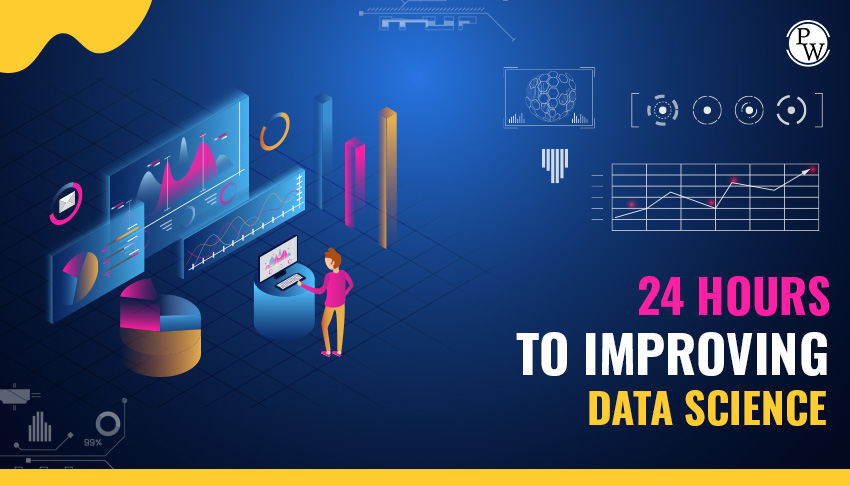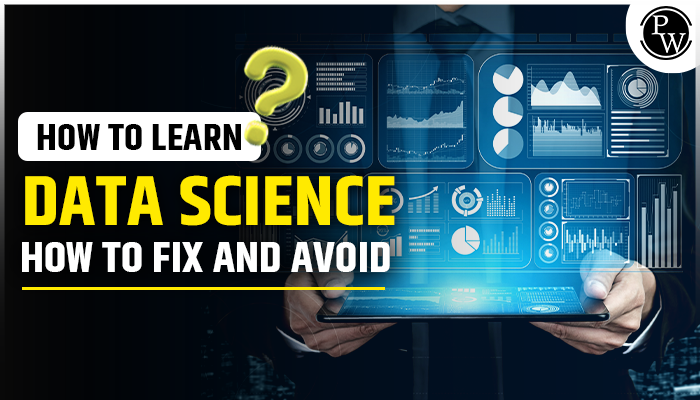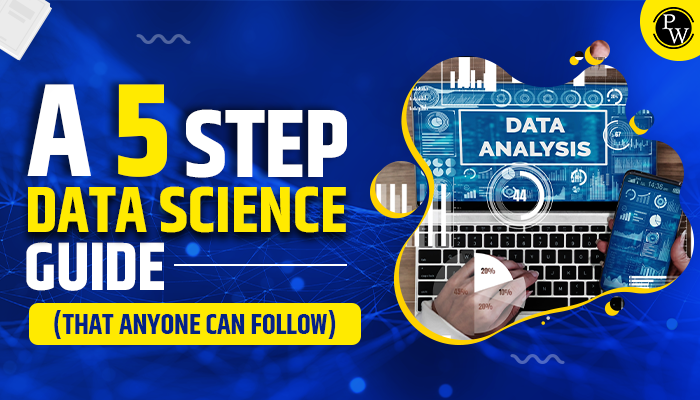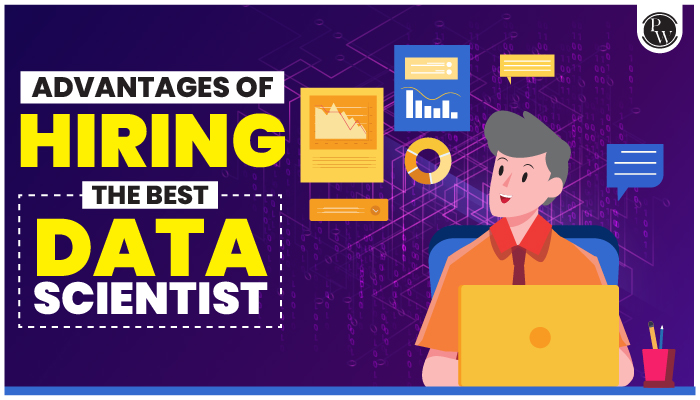With the change in Internet technology in daily life, modern businesses are also in the phase of change. Now, they are also relying on modern technology that transfers information through digital data. The rise of data science and analytics has attracted youth to pursue careers in current technology. Data science and related fields like data analytics remained a top priority. They are very interesting and are in high demand.
Employers and recruiters prioritize skills when searching for the perfect candidate, so this blog will give you a brief about Data Science, and it will also suggest ways to improve Data Science Skills.
Learning Path of Data Science
Beginners always look for step-by-step guides or learning paths to follow to start their career in Data Science. In this age of modern technology, online tutorials can be a good way to begin your journey. You can start with-
- You can start learning a programming language. The most famous programming languages in Data Science are Python, and R. NumPy, SciPy, and Pandas are the libraries in Python for Data Science.
- The second step is Statistics, a basic understanding of mathematics concepts like statistics, calculus, linear algebra, and probability is very beneficial.
- The Data must be studied as the information is in the form of Large excel sheets. These Large sheets are hard to analyze, so Data Visualization is the next thing you should focus on to master Data Science. Matplotlib, Plotly, and Seaborn are the most popular libraries for Data visualization in Python.
- When we feed a large amount of collected information to a machine, it uses an algorithm and returns logic from the information; for example, a recommendation from Youtube or Amazon uses the extracted algorithm from their previously collected data to recommend the next video or product.
- Finally, doing a project based on the concept of Data Science can be the best way to master it. You can use Kaggle for ideas for your project. Even participating in a contest can be the best way to implement whatever you have learned.
24 Hours to Improving Data Science
It is one of the most emerging fields and the most sought career options. According to Linkedin, there are more than 2 lakh job opportunities related to Data science. That is why data science can be the best career opportunity for you. You can start with some beginner-friendly courses which will let you know about the field of data science. But 24 hours is not at all enough, you need to practice, read, learn and get your hands dirty in this field totally to master the concepts and solve real-life problems. Here is how you can improve your data science skills are –
-
Join Kaggle Community
Kaggle is an online community of data scientists and machine learning practitioner who publishes data and explore and build the model in an online data science environment. This machine learning engineer and data scientists work, learn, compete, and grow together. Apart from this, Kaggle also provide micro-courses for beginners to start. This course starts with –
- Intro to Programming – Kaggle provides the best beginner-friendly courses. Even if you have zero coding experience, this can be a kickstart for you. This program familiarizes you with the concept of arithmetic, variable, functions, and data types, etc.
- Python – In this course, you will learn about Python syntax, function, boolean, list, loop, string, dictionaries, and working with external libraries. This will also prepare you for ML, AI, and SQL
- Machine Learning – In this program, you will dive into the field of model work, Data exploration, model validation, pipeline, XGBoost, and machine learning competition. You will also know how to use more sophisticated machine learning algorithms.
- Pandas – You are not able to work with data if you can’t read it. Panda will help you in indexing, selecting, assigning, grouping, renaming, and combining. This program will help you extract insight from your data and scale up your insight.
- Data Visualization – There are various libraries in Python that are used for data visualization like Matplotlib or Seaborn. You will learn about line charts, bar charts, heatmaps, scatter plots, and histograms to express the data.
- SQL – This lesson will teach you the workflow for handling big datasets with Big Query and SQL. Apart from this collecting interesting insights directly from SQL query, JOINs and UNIONs, and Nested and Repeated data will be introduced too.
Learn Data Science with R
Learning data science with R can be a great choice for many reasons. R is a powerful and flexible programming language that is widely used by data scientists, statisticians, and researchers. It has a large and active community, and there are many resources available for learning and improving your skills. You can learn about data types, vectors, lists, and data frames. You can also explore oracle databases using RJDBC, RODBC, and ROracle.
Open-Source Projects
Becoming a part of an open-source project is very necessary to improve your skills. You can find a majority of your needs on GitHub. You must participate in open-source data science projects if you wish to learn more about Big Data, explore and experiment, and grow your skills. Adding open-source projects to a portfolio can give newcomers a significant advantage over the competition.
Practice visualization
Data visualization is an important part of data science. It allows you to take complex data and present it in a way that is easy to understand. Start by learning about the different visualization tools and techniques, and practice creating visualizations using your own data. You can use tools like Matplotlib and ggplot2 to visualize your data. Businesses use graphs and charts to project their data so this visualization had become an integral part of them.
Use real-life data
You can practice your data science skills by working with real-life data. This could be data from a project, data from a public dataset, or data from a company you’re interested in working for. Examples of applied data science in real life are –
- Healthcare: It is used in the healthcare industry to analyze patient data, predict disease outbreaks, and develop personalized treatment plans.
- Finance: Python is widely used in the financial industry for algorithmic trading, risk management, and portfolio optimization.
Take a Microcourse
In such a short period someone can’t learn about all this, but you can try taking a short online course in data science. This will give you a structured way to learn the subject and get feedback from an instructor. It takes time to be a pro in this field, it doesn’t develop overnight. You need to understand, apply and practice the data science concepts and tools over and over again.
CONCLUSION
Data science is a rapidly growing field that has the potential to transform various industries and improve our lives in numerous ways. If you’re looking to get started with data science or want to improve your existing skills. In just 24 hours, you can make significant progress and gain a deeper understanding of this exciting field.
But to gain mastery in this field you have to spend some more time working on projects and solving problems. Especially you have to work on real-life problems and working models to improve your skills. Although these 24 hours of hard work will lay a great foundation for your data science career.
FREQUENTLY ASKED Questions
1. Why is Data Science so popular?
Ans) Businesses are going through a digital transformation like never before. Data science is one of the developing fields where professionals with specialized skills are finding good career opportunities. The demand for roles like data scientists, data analysts, and data engineers is increasing exponentially.
2. Does data science require coding?
Ans) Data science roles typically require coding skills, and most experienced data scientists still code. But several technologies now exist that allow people to complete entire data projects without typing code.
3. What are data science technologies?
Ans) The demand in data science and information technology is being pushed forward by the growing popularity of cloud computing, Augmented Reality, Virtual Reality, Artificial Intelligence, Machine Learning, Decision Intelligence, cloud computing, big data, and many other technologies.






